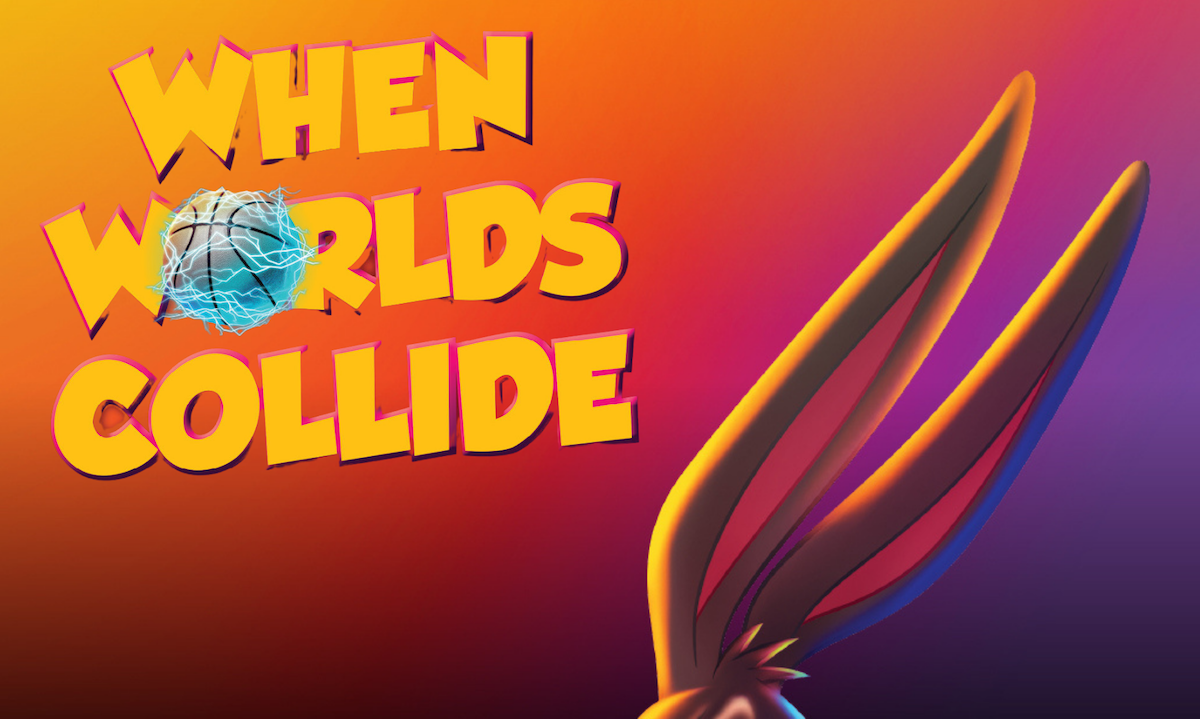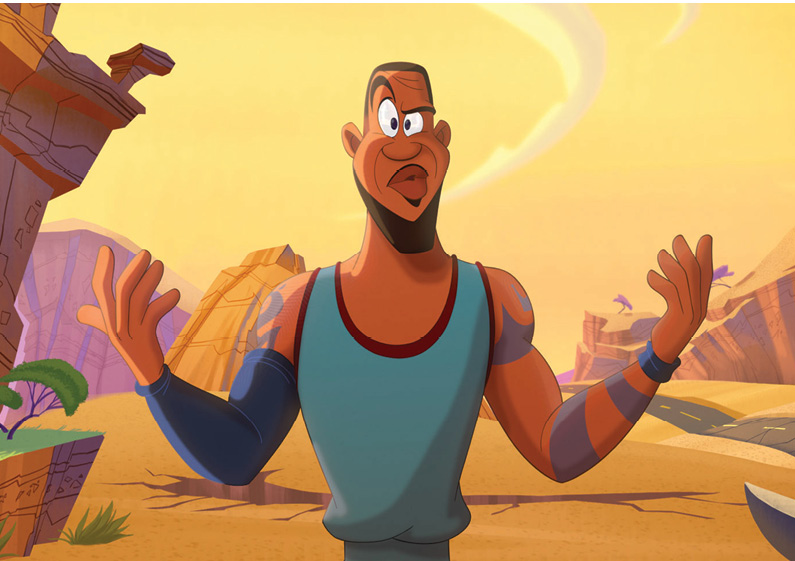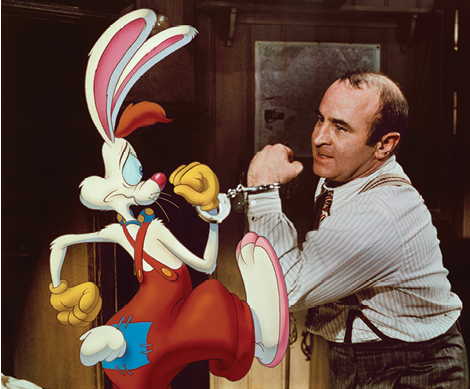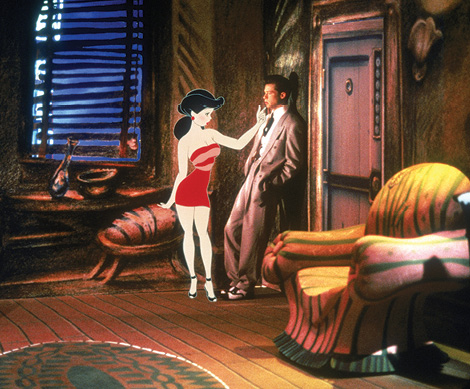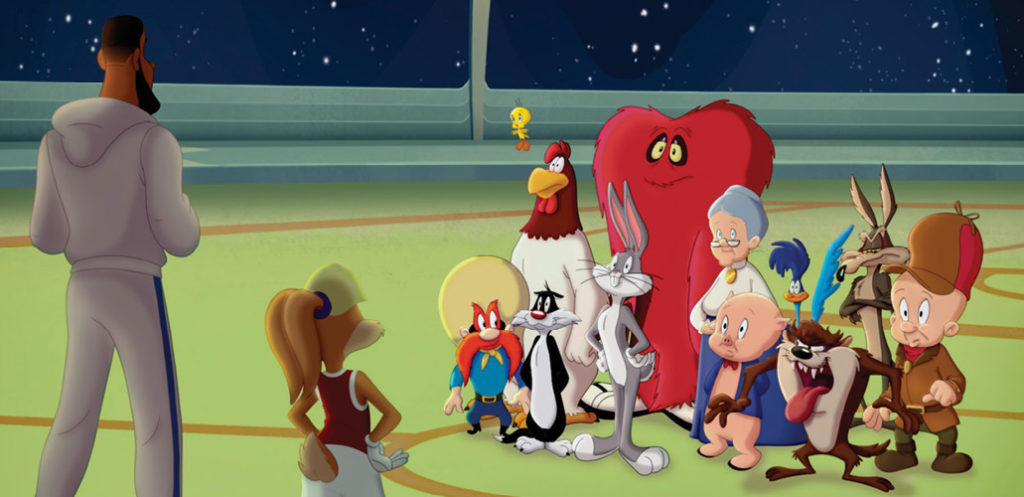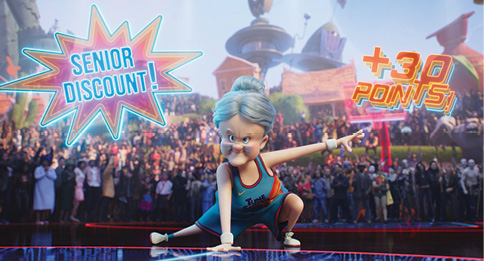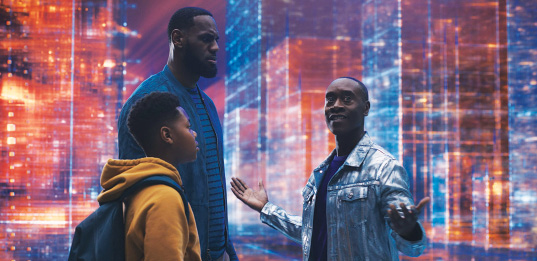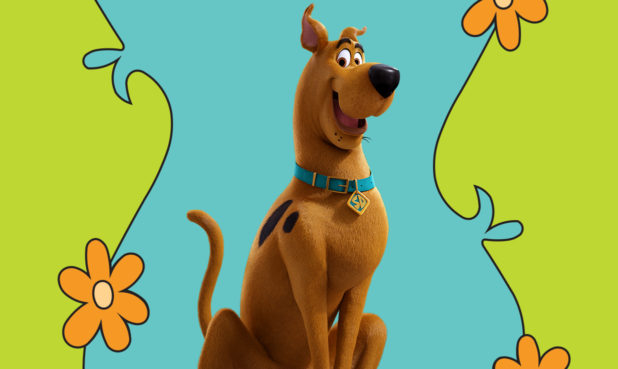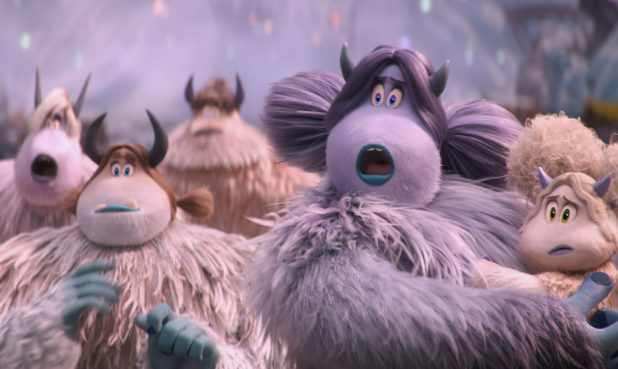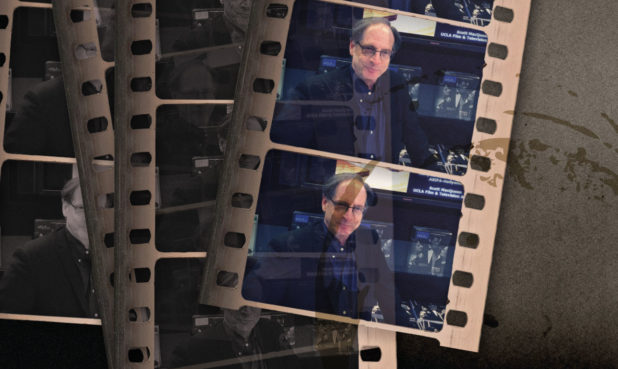Once again, those Looney Tunes characters needed the assistance of a real NBA star to beat back their monstrous opponents. But unless Bugs, Daffy, and the gang were going to spring to life or LeBron James was going to get the full animation treatment, the upcoming Space Jam: A New Legacy had to be made as a live-action/animation hybrid, just like its predecessor of 25 years ago, Space Jam.
Much has changed in hybrid capabilities between Jams. Indeed, with the progression of CG effects, the technology for placing animated and live action together now leads to eye-popping visuals. Spike Brandt, who worked on both the original and the current versions, thinks it’s especially cool, though, that even in these days of high-concept techniques, hybrid films often still use hand-drawn animation, which seems to be undergoing a cinematic renaissance.
Granted, there are certain things about the earlier routines that he most certainly will not miss. “The live-action parts used to be printed on these Mylar sheets, and they were very slippery,” says Brandt, the new Space Jam’s Animation Supervisor, who has worked extensively in the Looney Tunes world. “If you had a stack on your desk, you had to be careful because once they started sliding, there was a waterfall effect, and they would end up all over the floor.”
The tools that artists now use to bring live-action/cartoon hybridization to life are not only more manageable than the old Mylar, they’re also more plentiful since the days when rotoscope animation allowed Koko the Clown of the Out of the Inkwell shorts to interact with his creator Max Fleischer. Walt Disney started experimenting with live action and animation melds with the Alice Comedies of the 1920s, and as the years tumbled on, his toolbox expanded to include the sodium vapor process, in which filmmakers set up a white screen behind the actors and flooded it with sodium vapor light.
The multi-head optical printer developed for Disney by Ub Iwerks (earning him an Oscar for Technical Achievement in 1959) allowed filmmakers to combine and layer special effects and matte paintings, making for a more seamless blend. As the technology improved, the hybrids kept on coming (see sidebar). And mixed scenes like Mary Poppins’ “Jolly Holiday” outing or Eddie Valiant’s chaotic visit to Toontown in Who Framed Roger Rabbit turned out to be among the most memorable sequences of those beloved movies.
2D Takeover
Details of exactly what the blended worlds of Space Jam: A New Legacy would look like were carefully guarded before the film’s July 16 release, but Brandt notes that the new Jam offers one obvious and quite significant feature.
“For a certain portion of the film, LeBron James will be a 2D [cartoon] character. Obviously, he’s a new character in the 2D world, and he had to kind of be invented. We had to explore how he would move and fit into the Looney Tunes world and still be believable as LeBron. I think people had a lot of fun animating those scenes and these characters and all of the scenarios we placed them in.”
King James is not the only one who will be getting a visual metamorphosis. Watching the Looney Tunes characters morph from their hand-drawn roots to digitally enhanced CG through the course of the movie is something that artists and longtime fans of the characters should both appreciate.
“It’s nicely integrated into the story, and it all makes sense,” says Brandt. “2D animation onscreen is becoming exciting again. It’s kind of becoming a new look, and then we’re also able to do the CG version of some of these characters. This will be the first time we see Bugs Bunny in that full CG.”
“We used tons of ink lines and shadows and tones and colors, celebrating all of these amazing characters and giving them extra spin for 2021,” adds Devin Crane, the Animation Production Designer on the new film before he was promoted to Co-Animation Supervisor. “We found a way to stylize these [CG] ‘toons in the computer which would help celebrate everything we love about them but make changes and improvements that would make them sing. We pushed textures and feathers and fur.”
“In terms of the contact between the animated characters and the live action, if you’re off by two to three frames, the illusion is blown.”
– Andreas Deja, Supervising Animator, Who Framed Roger Rabbit
Making Contact
From a creative standpoint, the challenges of bringing live action and animation into the same frame are still significant, especially if you want the audience’s unconditional buy-in. We all know about actors working alone on a green screen opposite “characters” they never actually see. But how about the character designers, art directors, and visual effects crew whose work must convince the viewer that, yes indeed, a zany cartoon rabbit (Roger, not Bugs) is handcuffed to a balding gumshoe?
“Richard Williams was a stickler for technique. It had to be perfect,” recalls Andreas Deja, Roger Rabbit’s Supervising Animator, speaking about the late Oscar-winning animation director. “In terms of the contact between the animated characters and the live action, if you’re off by two to three frames, the illusion is blown.”
When looking at hybrids, Deja says he examines the tangible, physical ways in which these realms converge, such as Bedknobs and Broomsticks’ Emelius Browne helping the lion king of Naboombu into his cape or the numerous dust-ups between Eddie Valiant and Roger Rabbit which, back in 1988, were a beast to create.
“I always look for the connection between the human actors and the animated characters,” says Deja. “You have to make sure that their hands are touching in a convincing way when they shake hands. When a live-action character is picking up an animated character, are they making sure it feels like the animated character has weight? If Roger Rabbit is holding a live-action glass of water, you have to make sure the fingers are always solid on that glass and not sliding up and down, which is something that could happen very easily.”
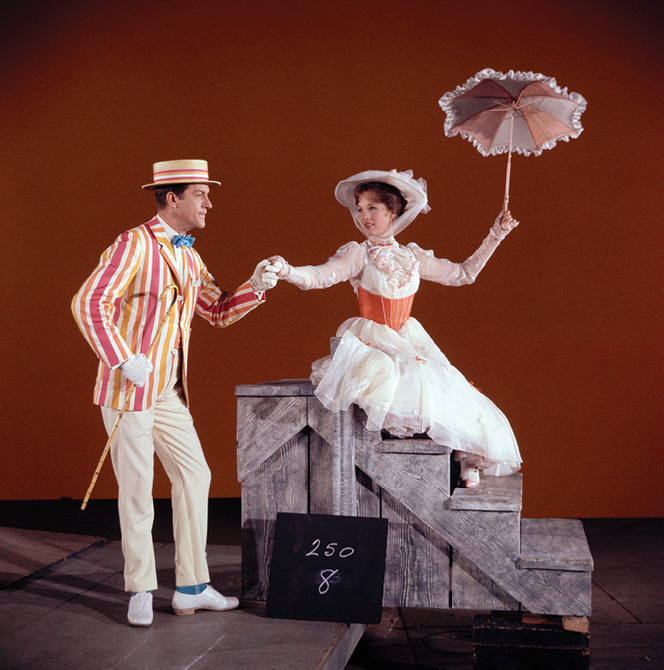
“There are some movies that know this could be a problem so they avoid the physical contact between the live and the animated characters,” he continues. “On Roger Rabbit, we were having as much contact as possible to set up the idea that these characters live side by side in the same world.”
The cheek-by-jowl nature of Roger Rabbit, the complexity of the characters, and Director Robert Zemeckis’ insistence that the camera be allowed to move freely is part of what made the film a game changer in the live-action/animation genre. Ralph Bakshi’s adult take on it, Cool World (1992), followed a similar path, mixing present-day Hollywood with a comic book realm created by the movie’s main character, Jack Deebs—but the effect was notably different than what Roger Rabbit pulled off, according to the film’s Color Modelist Clayton Stang.
“Roger Rabbit was trying to make 2D animated characters look like 3D. They had tone mattes and highlighting to make the characters look round so they fit in with live action,” says Stang. If a live-action character wound up in Cool World, we wanted those characters looking flat and 2D. We wanted this to be an animated film that live-action characters happened to drop into.”
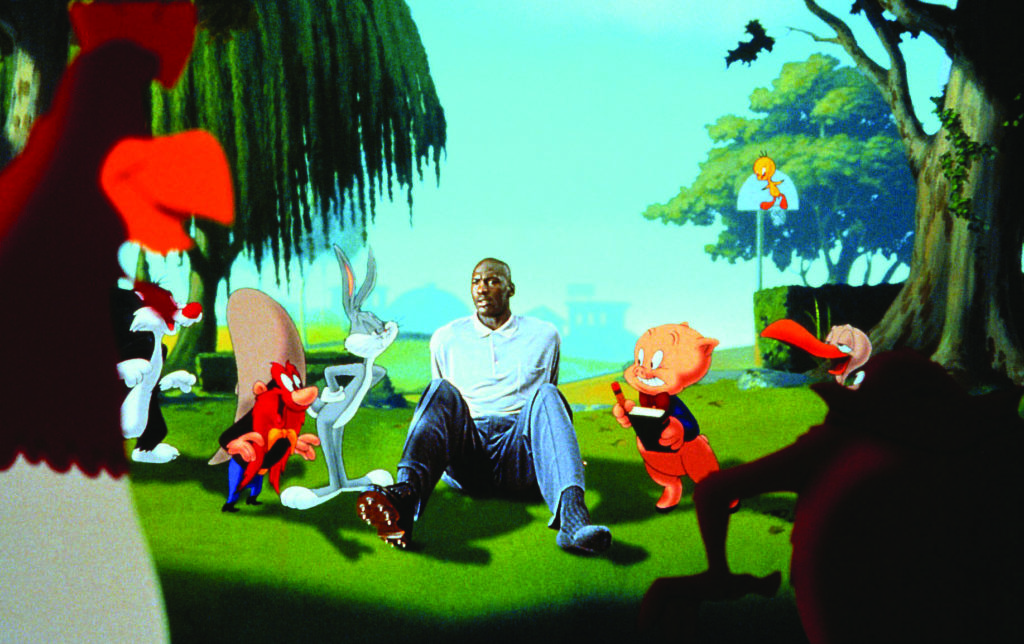
Dropping Anchor
By the time Space Jam came around four years later, digital animation was at a threshold, making the task of bringing animation and live action together much easier than it had been in the past. Still, given the amount of unanswered questions involved in putting hybrid scenes together, the movie’s animation Co-Director Bruce W. Smith says there was a certain amount of “duct tape and spit” creativity.
“I don’t think that shot had any real animation in it, maybe some Tunes running around here and there… But the fact that we could anchor [Jordan] in an animated world and still have it be believable was a huge stepping stone for us.”—Bruce W. Smith, Animation Co-Director, Space Jam
“There were a lot of happy accidents along the way, guestimations that sometimes would fail, but we would quickly recover and find a way to make the movie look as cool as it was,” says Smith, who had worked as an animator on Who Framed Roger Rabbit.
According to Smith, Director Joe Pytka used a “loose camera,” employing handheld camera effects. Register balls placed on the outfits of stuntmen and in locations throughout the studio helped track all the live-action shots which would eventually be anchored to the animation. Instead of traditional side-to-side movements, animation could now be tracked in any direction without becoming a distraction.
In the film’s first successful tracking shot, Michael Jordan had just landed in the Looney Tunes world, and a handheld camera was tracking him. So in order to establish Jordan as a character in a cartoon world, he had to be lit in such a way that he could be anchored in the setting.
“I don’t think that shot had any real animation in it, maybe some Tunes running around here and there,” Smith says. “But the fact that we could anchor [Jordan] in an animated world and still have it be believable was a huge stepping stone for us.”
And if you think it’s difficult to have Michael Jordan maneuvering around a bunch of animated Looney Tunes characters and aliens, imagine the logistics involved with sending a couple of those Tunes back up into our world. For a scene that had Bugs and Daffy tunneling into Jordan’s house to get his basketball kicks, Smith and his Co-Director Tony Cervone engaged in a constant game of “where’s the rabbit?”
“We would have to take a dry erase [pen] to the screen and draw where Bugs would be in each portion of the shot so they would get the eyelines correct for the kids,” recalls Smith. “The kids come through looking for Bugs and looking for Daffy. What about the shoe? How big is Daffy compared to the shoe? That was a whole week of plotting that shot out.”
Size Matters
If you think back to Gene Kelly and Jerry the mouse dancing together in 1945’s Anchors Aweigh, it doesn’t take a trained eye to realize that Jerry is quite a bit larger than he typically appears in his usual ‘toon world. The suspension of disbelief needed an even greater adjustment to bring relatively small characters into the same basketball game with NBA players and giant animated alien monsters. Because of this, sometimes the characters in Space Jam would be their traditional size, while in other instances, they were scaled down or up.
“Is Foghorn Leghorn actually 7 feet tall? He really shouldn’t be that big. That’s a very scary rooster,” says Smith. “With situations like that, we had to anchor it and restage certain scenes to make sure all the characters that needed to be onscreen could be [there] at the same time.”
Whether King James also contends with undersized ducks or giant roosters in the rebooted adventure, all eyes figure to be on the visuals of the new Jam, a movie which Brandt hopes will make 2D animation cool again.
“There were a lot of people who were animating on this who said, ‘I can’t believe we’re doing this again,’” Brandt says. He notes what a different experience it is from CG work, and how blending it in fit the story, adding, “I think it’s exciting to be able to reenergize 2D animation a little bit with this, and I hope it leads to even more projects.”
Who Framed Roger Rabbit image courtesy of Disney. Cool World image courtesy of Paramount Pictures. Space Jam images courtesy of Warner Bros.
